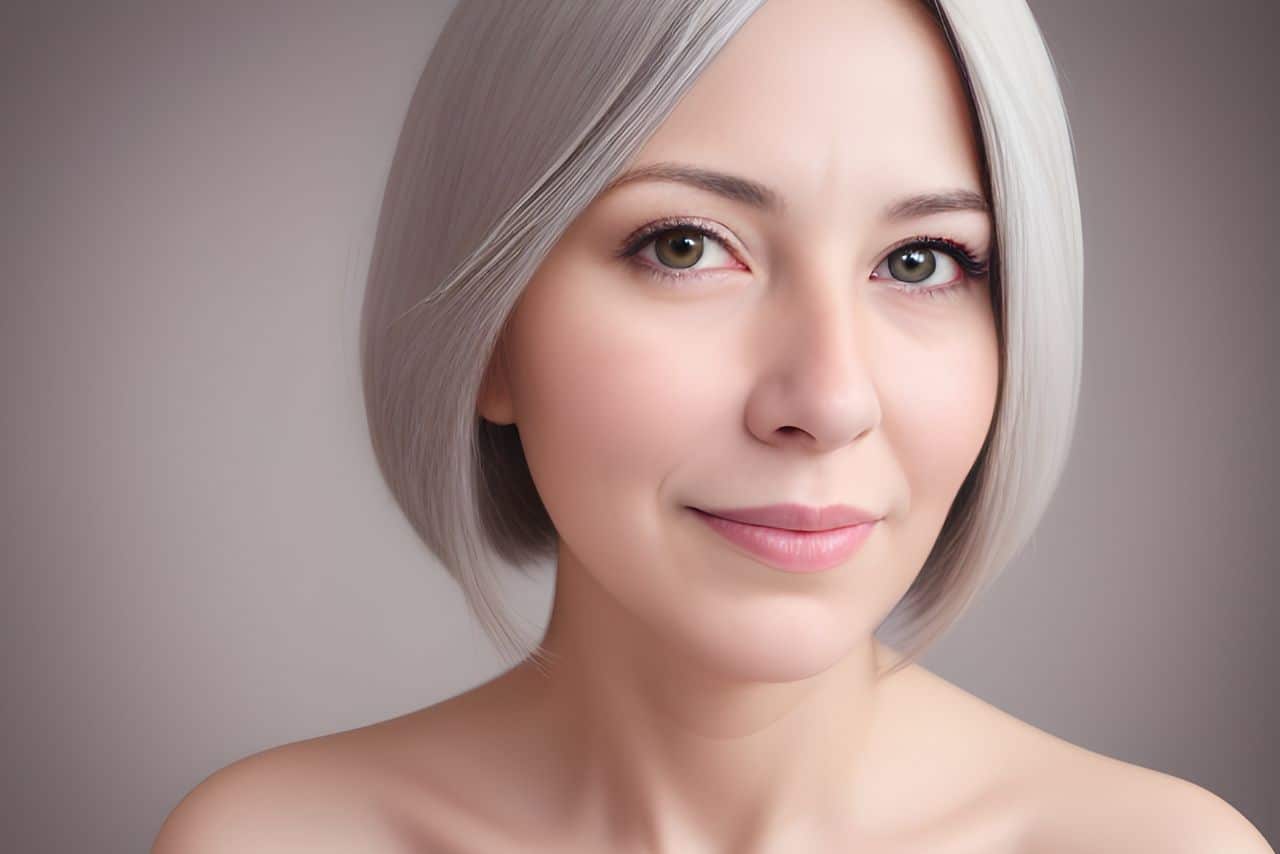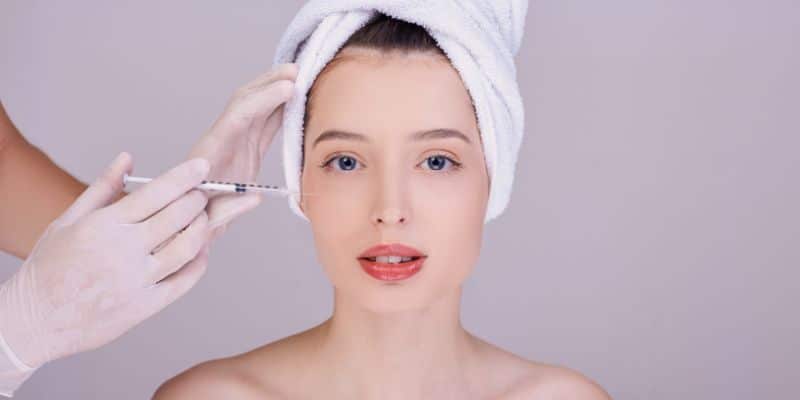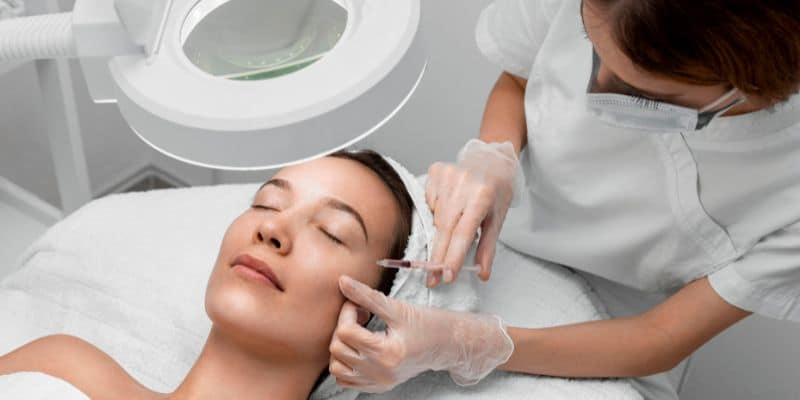
As a healthcare provider, it’s important to stay up-to-date on the latest aesthetic dermal fillers to offer the best options for your patients. One such filler that has gained popularity in recent years is Sculptra, an injectable product used for facial and body contouring. If you’re considering adding Sculptra to your inventory of products, you’ve come to the right place.
In this article, we will provide a comprehensive overview of Sculptra, including its ingredients, uses, indications, precautions, and more. We’ll also compare Sculptra to other dermal fillers on the market and describe popular Sculptra treatments. Whether you’re a seasoned provider or new to the field, this article will give you the information you need to make an informed decision about whether Sculptra is the right product for your practice.
If you’re in the market to buy Sculptra, it’s important to understand the product thoroughly before making a purchase. Sculptra is different from other dermal fillers in that it works by stimulating collagen production, rather than just filling in wrinkles and lines. This unique approach to volume restoration can lead to more natural-looking results that last longer than other fillers. However, it’s also important to note that Sculptra requires multiple treatments over several months to achieve optimal results.
As you read through this article, keep in mind that Sculptra is a prescription product that should only be administered by trained healthcare professionals. Before purchasing Sculptra, it’s important to ensure that you have the necessary training and expertise to safely and effectively administer the product to your patients.
In the following sections, we will provide in-depth information on Sculptra’s ingredients, uses, indications, precautions, and more. We’ll also compare Sculptra to other dermal fillers on the market and describe popular Sculptra treatments. By the end of this article, you’ll have a thorough understanding of Sculptra and whether it’s the right product for your practice. So, let’s get started.
Ingredients of Sculptra
Sculptra is an injectable dermal filler made of polylactic acid (PLA), water, and carboxymethylcellulose (CMC). These ingredients work together to stimulate collagen production and restore volume to the skin.
PLA is a biodegradable and biocompatible synthetic polymer that has been used in medical applications for over 40 years. It is derived from lactic acid, which is a natural substance found in the body that is involved in energy metabolism. PLA is able to stimulate the body’s natural collagen production, which helps to restore volume and improve skin elasticity over time.
Water is the second main ingredient in Sculptra and serves as a diluent to help distribute the product evenly throughout the treatment area. Water also helps to keep the skin hydrated and supple, which can further enhance the results of Sculptra treatment.
The third ingredient in Sculptra is CMC, which is a cellulose derivative used as a thickening agent and stabilizer. CMC helps to give Sculptra its unique texture and consistency, making it easier to administer and ensuring that the product is distributed evenly throughout the treatment area.
One of the key benefits of Sculptra is that it is made of biocompatible and biodegradable materials, which means that it is well-tolerated by the body and does not pose a risk of allergic reaction or rejection. The ingredients in Sculptra are gradually broken down by the body and eliminated through natural metabolic processes, leaving behind new collagen that can provide long-lasting volume and improved skin texture.
In the next section, we will discuss the uses of Sculptra, including how it can be used for facial and body contouring.
Uses of Sculptra
Sculptra is an injectable dermal filler that is primarily used for facial and body contouring. The product is designed to restore volume and improve skin texture, making it a popular choice for patients seeking a more youthful and refreshed appearance.
Facial Contouring
Sculptra can be used to add volume and contour to the face, helping to reduce the appearance of wrinkles, fine lines, and other signs of aging. The product is particularly effective for restoring volume to the cheeks, temples, and chin, which can help to improve the overall balance and symmetry of the face. Sculptra can also be used to improve the appearance of nasolabial folds, marionette lines, and other deep wrinkles and folds.
Body Contouring
Sculptra can also be used for body contouring, particularly in areas such as the buttocks and thighs. The product can be used to add volume and improve the appearance of cellulite, making it a popular choice for patients seeking a non-surgical alternative to more invasive procedures such as liposuction.
It’s important to note that Sculptra is not a replacement for a healthy diet and exercise, and it should not be used as a weight loss tool. Rather, the product is intended to enhance the body’s natural contours and improve the appearance of the skin in targeted areas.
One of the key benefits of Sculptra is that it provides gradual and long-lasting results. While other dermal fillers may offer immediate results that fade over time, Sculptra works by stimulating the body’s natural collagen production, which can lead to gradual improvements in skin texture and volume over the course of several months.
In the next section, we will discuss the indications for Sculptra, including the specific conditions that the product is designed to treat.
Indications for Sculptra
Sculptra is an injectable dermal filler that is designed to improve the appearance of wrinkles, fine lines, and other signs of aging. The product is particularly effective for restoring volume to the face and body, making it a popular choice for patients seeking a more youthful and refreshed appearance.
Loss of Facial Volume
One of the primary indications for Sculptra is loss of facial volume, which is a common sign of aging. As we age, the skin loses elasticity and volume, which can lead to wrinkles, fine lines, and sagging. Sculptra can be used to add volume to the cheeks, temples, and chin, which can help to improve the overall balance and symmetry of the face. The product can also be used to improve the appearance of nasolabial folds, marionette lines, and other deep wrinkles and folds.
Deep Wrinkles and Folds
Sculptra can also be used to improve the appearance of deep wrinkles and folds, particularly in areas such as the cheeks and chin. The product works by stimulating collagen production, which can help to plump up the skin and reduce the appearance of wrinkles and fine lines.
Scars
Sculptra can also be used to improve the appearance of scars, including those caused by acne or injury. The product can be injected directly into the scar tissue, helping to restore volume and improve the texture and appearance of the skin.
It’s important to note that Sculptra is not a replacement for a healthy lifestyle and skincare routine, and patients should be advised to maintain a healthy diet, exercise regularly, and protect their skin from sun damage to maximize the benefits of the treatment.
In the next section, we will discuss the precautions and side effects associated with Sculptra treatment.
Precautions and Side Effects
While Sculptra is a safe and effective dermal filler when administered by a trained healthcare professional, there are some precautions and side effects that should be considered before using the product.
Precautions
Before administering Sculptra, it’s important to ensure that the patient is a suitable candidate for the treatment. Patients with a history of allergies or autoimmune disorders may not be suitable for Sculptra treatment, and healthcare providers should carefully consider the patient’s medical history before proceeding with the treatment.
It’s also important to note that Sculptra should not be injected into areas with active infection or inflammation, as this can increase the risk of complications. Additionally, Sculptra should not be used in patients who are pregnant or breastfeeding.
Side Effects
While Sculptra is generally well-tolerated by patients, there are some side effects that may occur following treatment. These side effects are typically mild to moderate in nature and include:
- Swelling, redness, or tenderness at the injection site
- Bruising or bleeding at the injection site
- Itching or discomfort at the injection site
- Nodules or bumps under the skin
These side effects typically resolve within a few days to a few weeks and can be managed with over-the-counter pain relievers or cold compresses.
In rare cases, more serious side effects may occur, including:
- Infection
- Allergic reaction
- Granulomas (small, hard bumps under the skin)
If any of these side effects occur, patients should seek medical attention immediately.
In the next section, we will compare Sculptra to other dermal fillers on the market and discuss the unique benefits of Sculptra treatment.
Comparison to Other Dermal Fillers
Sculptra is a unique dermal filler that works by stimulating collagen production, rather than just filling in wrinkles and lines. This unique approach to volume restoration sets Sculptra apart from other dermal fillers on the market, including Juvederm, Restylane, and Radiesse.
Juvederm
Juvederm is a hyaluronic acid-based dermal filler that is designed to fill in wrinkles and add volume to the skin. While Juvederm can provide immediate results, the effects of the treatment typically last for six to nine months. In contrast, Sculptra provides gradual and long-lasting results that can last up to two years or more.
Restylane
Restylane is another hyaluronic acid-based dermal filler that is used to add volume and improve the appearance of wrinkles and fine lines. Like Juvederm, the effects of Restylane typically last for six to nine months. Sculptra, on the other hand, provides gradual and long-lasting results that can last up to two years or more.
Radiesse
Radiesse is a calcium hydroxylapatite-based dermal filler that is used to add volume to the skin and improve the appearance of wrinkles and fine lines. While Radiesse provides immediate results, the effects of the treatment typically last for one to two years. In contrast, Sculptra provides gradual and long-lasting results that can last up to two years or more.
In the next section, we will discuss popular Sculptra treatments and provide guidance for healthcare providers on how to administer Sculptra safely and effectively.
Popular Sculptra Treatments
Sculptra is a versatile dermal filler that can be used to improve the appearance of wrinkles, fine lines, and other signs of aging in various areas of the face and body. Here are some of the most popular Sculptra treatments:
Cheeks
Sculptra can be used to add volume and contour to the cheeks, helping to improve the overall balance and symmetry of the face. The product is particularly effective for restoring volume to hollowed or sunken cheeks, which can occur as a natural part of the aging process.
Temples
Sculptra can also be used to restore volume to the temples, which can help to improve the overall shape and appearance of the face. Hollow temples can occur as a natural part of the aging process and can make the face appear sunken or drawn.
Chin
Sculptra can be used to add volume and contour to the chin, helping to improve the overall balance and proportion of the face. The product is particularly effective for restoring volume to a receding chin, which can occur as a natural part of the aging process or due to genetics.
Body
Sculptra can also be used for body contouring, particularly in areas such as the buttocks and thighs. The product can be used to add volume and improve the appearance of cellulite, making it a popular choice for patients seeking a non-surgical alternative to more invasive procedures such as liposuction.
In addition to administering Sculptra safely and effectively, healthcare providers should also provide patients with post-treatment guidance on how to maximize the benefits of the treatment. This may include advising patients to maintain a healthy diet and exercise regularly, protect their skin from sun damage, and avoid smoking and excessive alcohol consumption.
Sculptra Frequently Asked Questions (FAQ)
What is Sculptra?
Sculptra is an injectable dermal filler that is designed to improve the appearance of wrinkles, fine lines, and other signs of aging. The product works by stimulating collagen production, which helps to restore volume and improve skin texture.
How does Sculptra work?
Sculptra works by stimulating collagen production, which helps to restore volume and improve skin texture. The product is injected into the skin, where it gradually works to improve the appearance of wrinkles, fine lines, and other signs of aging over the course of several months.
What are the benefits of Sculptra?
One of the key benefits of Sculptra is that it provides gradual and long-lasting results. While other dermal fillers may offer immediate results that fade over time, Sculptra works by stimulating the body’s natural collagen production, which can lead to gradual improvements in skin texture and volume over the course of several months.
How long do the results of Sculptra last?
The results of Sculptra can last up to two years or more, making it one of the longest-lasting dermal fillers on the market.
Is Sculptra safe?
Yes, Sculptra is a safe and FDA-approved dermal filler when administered by a trained healthcare professional.
What are the potential side effects of Sculptra?
The potential side effects of Sculptra include swelling, redness, or tenderness at the injection site, bruising or bleeding at the injection site, itching or discomfort at the injection site, and nodules or bumps under the skin. These side effects typically resolve within a few days to a few weeks and can be managed with over-the-counter pain relievers or cold compresses.
How long does the Sculptra treatment take?
The Sculptra treatment typically takes about 30 to 45 minutes to complete, depending on the area being treated.
Who is a suitable candidate for Sculptra?
Suitable candidates for Sculptra include patients who are seeking to improve the appearance of wrinkles, fine lines, and other signs of aging in various areas of the face and body.
How much does Sculptra cost?
The cost of Sculptra can vary depending on the area being treated, the amount of product required, and the healthcare provider’s fees. It’s important to consult with a healthcare provider to get an accurate cost estimate for the treatment.
How can I purchase Sculptra wholesale?
Sculptra can be purchased wholesale through authorized distributors and healthcare providers who have the necessary training and expertise to administer the product safely and effectively.
Can Sculptra be used for body contouring?
Yes, Sculptra can be used for body contouring, particularly in areas such as the buttocks and thighs.
Does Sculptra require any downtime?
There is typically no downtime required after a Sculptra treatment, although patients may experience some swelling, redness, or tenderness at the injection site.
How long does it take to see results from Sculptra?
The results of Sculptra are gradual and can take several months to become fully visible.
Can Sculptra be used in conjunction with other treatments?
Yes, Sculptra can be used in conjunction with other treatments, such as other dermal fillers.
Is there a minimum age requirement for Sculptra treatment?
Sculptra is typically not recommended for patients under the age of 18.
Conclusion
In conclusion, Sculptra is a highly effective and versatile dermal filler that can be used to improve the appearance of wrinkles, fine lines, and other signs of aging in various areas of the face and body. The product works by stimulating collagen production, which helps to restore volume and improve skin texture over the course of several months.
One of the key benefits of Sculptra is that it provides gradual and long-lasting results, with the effects lasting up to two years or more. This makes it an excellent choice for patients who are looking for a non-surgical solution to improve their appearance without the need for frequent touch-ups or repeat treatments.
While Sculptra is generally considered safe when administered by a trained healthcare professional, it’s important to carefully review the patient’s medical history and ensure that they are a suitable candidate for the treatment. Potential side effects of Sculptra can include swelling, redness, or tenderness at the injection site, bruising or bleeding at the injection site, itching or discomfort at the injection site, and nodules or bumps under the skin.
Overall, Sculptra is an excellent choice for healthcare providers who are looking to expand their product portfolio with a highly effective and versatile dermal filler. By understanding the ingredients, uses, indications, precautions, and popular treatments associated with Sculptra, healthcare providers can offer their patients a safe and effective solution for improving their appearance and boosting their confidence.

About the Author: Doris Dickson is a specialist writer for Health Supplies Plus, focusing on the aesthetic medicine industry. She diligently researches cosmetic treatments and products to provide clear, concise information relevant to licensed medical professionals. Her work supports Health Supplies Plus’s commitment to being a reliable informational resource and trusted supplier for the aesthetic community.
Disclaimer: The content provided in this article is intended for informational purposes only and is directed towards licensed medical professionals. It is not intended to be a substitute for professional medical advice, diagnosis, or treatment, nor does it constitute an endorsement of any specific product or technique. Practitioners must rely on their own professional judgment, clinical experience, and knowledge of patient needs, and should always consult the full product prescribing information and relevant clinical guidelines before use. Health Supplies Plus does not provide medical advice.


